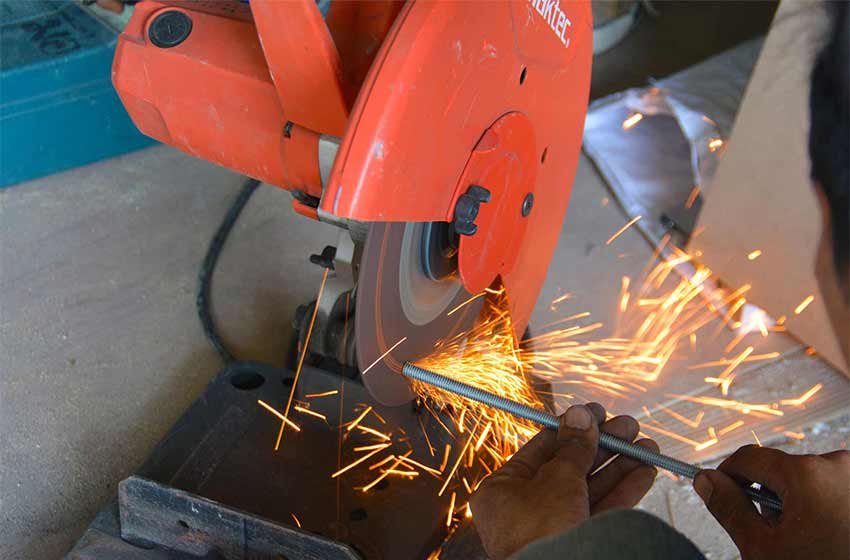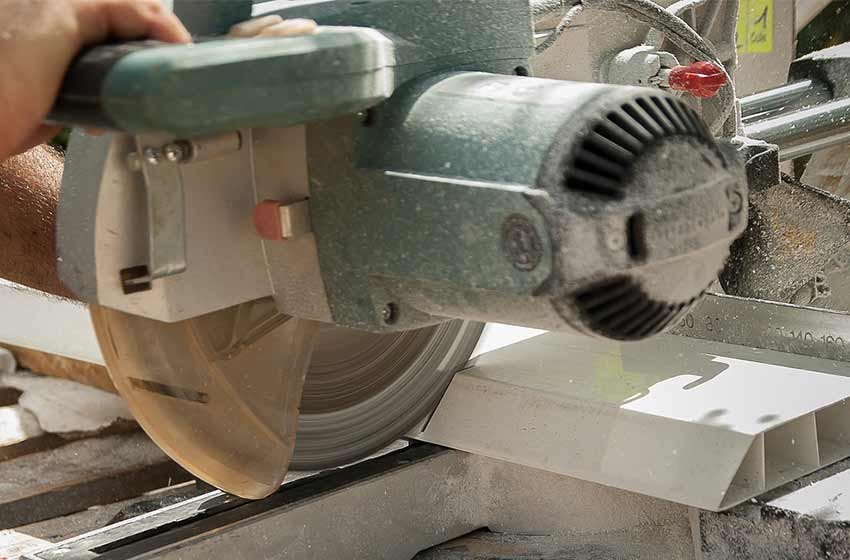Don’t you just hate it when you’re mid-way through a project and you find your table saw blade isn’t slicing with the ease or precision that it usually does anymore? When this happens, it might be in need of sharpening.
(image of table saw, clearly showing the blade)
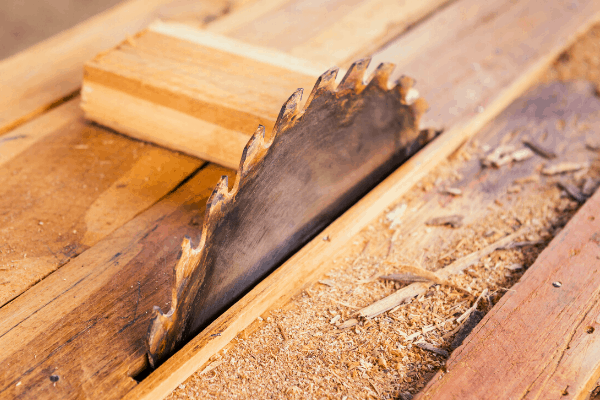
Is sharpening the blade yourself the right call? Is it doable? Or are you better off buying a new blade altogether? This post will hopefully address these questions and help you feel a bit more confident about your next course of action.
Firstly, let’s take a look at the tell-tale signs that your blade is indeed losing its edge (pun intended).
How Do I Know My Table Saw Blade Needs Sharpening?
If you’ve ever had a kitchen knife that was once the pride and glory of your utensil drawer but now is unable to slice through a tomato without causing the seeds to squish out in every direction, you’ll understand the disappointment of a dull blade.
The tool that was once able to chop carrots, slice through meat, or dice potatoes with ease is now a useless slab of metal that’s only capable of crushing and denting. A table saw losing its sharpness and vigour is a very similar situation.
It should be fairly easy to tell if your table saw blade is getting dull or blunt, as this should directly impact your work with the saw.
Basically, knowing that your blade needs sharpening comes down to you using your best judgement. That said, there are some red flags to look out for.
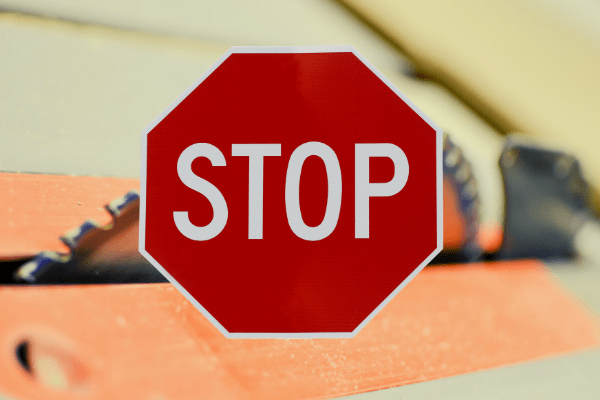
Symptoms of a Dull Table Saw Blade
These signs are just a few that will give you the hint that it’s time to sharpen or change your blade, and luckily, they’re very easy to spot!
- Resistance while sawing – this is one of the most obvious signs that your blade is not as sharp as it could be.
- The blade causes chips and tears as it cuts through wood – this means that the blade is no longer sharp enough to slice cleanly through whatever you’re trying to cut.
- Friction burns – a sharp blade will go through wood quickly and effortlessly, a dull blade requires more time and effort, leading to increased friction.
- Unusual motor sounds – if the motor is straining or making loud or unusual sounds whilst you’re working, odds are it’s because it is exerting more effort to get the blade to cut.
- Loss of control – if you’re finding it more difficult to slice in straight lines, this could be an indicator of a blunt blade at work.
- Obvious signs of wear or damage – if you can see blade teeth missing or ones that are bent or broken, this is most likely due to the blade being unable to get through a piece of wood.
(image of saw blade with broken/ chipped teeth)
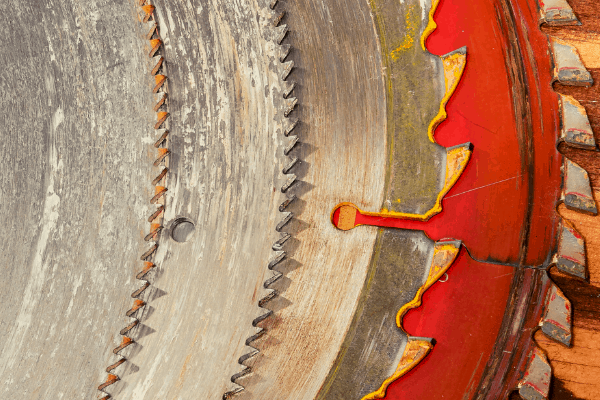
If you notice any of these signs, or indeed a combination of several of them, then the best thing to do is stop what you’re doing immediately and consider your blade sharpening options.
What Exactly Are Your Options?
Sharpen Your Table Saw Blade
Although it can sometimes be a painstaking process, it is possible for you to sharpen your table saw blade yourself. You can do so by following these steps:
- Turn your table saw off and unplug it to ensure you aren’t surprised by any unexpected blade spinning.
- Make sure you’re wearing the appropriate protective gear such as gloves, safety goggles, and earplugs or earmuffs. It might also be worth carrying out the sharpening in a well-ventilated area.
- This might seem obvious but in order to further minimise the risk of accidents happening, remove the dull blade from the table saw.
- Sharpening the table saw blade will require the use of another kind of circular blade – a diamond blade – which is what you’ll be using to sharpen the table saw blade. Securely insert this diamond blade into the table saw, replacing the dull blade you have just removed.
- Make a mark on the table saw blade tooth you’re going to sharpen first; that way you’ll know where you started instead of going round and round the blade aimlessly.
- Plug the table saw back in and turn it on. Once the diamond blade is turning, take the dull table saw blade and place the marked tooth against the diamond blade, making sure the inner edge of the tooth is the part making contact with the diamond blade as this is the area causing the dullness.
- Once the first tooth is sufficiently sharp, move onto the next one and so on and so forth, until the whole blade is sharp again.
- Once you’ve finished sharpening your table saw blade, you can turn off the table saw and carefully remove the diamond blade, giving it a clean to remove metal and carbide (compound composed of carbon and metal) particles before putting it away.
- You can then reattach your newly sharpened table saw blade and you should be good to go!
- Get sawing!
It is imperative that you exercise caution whilst sharpening your own table saw blade. Diamond blades, although incredibly useful and versatile, can also be dangerous especially when being powered by a motor! There are also ample opportunities to cut yourself when switching out blades so that’s why wearing gloves is so important.
Buy a New Blade
If you don’t have a diamond blade and don’t fancy the process of cleaning your own blade, the only other option you’re left with is to go out and buy a replacement blade. This is probably the quicker and easier option, but it will cost you some money depending on the type of blade you go for.
This is also not exactly a long-term solution as eventually even the new replacement blade will need sharpening. It wouldn’t be a very sustainable option to keep buying new blades every time one got blunt so it’s probably better to just invest in a diamond blade and learn how to sharpen your table saw blades yourself.
Lengthening the Lifespan of Your Table Saw Blade
Having to sharpen your table saw blade is inconvenient, there’s no getting around that. Unfortunately, the time will come when it is necessary, but there are some actions you can take to properly maintain your saw blade to extend its useful period.
- Clean your blade after each use – this will remove any metal particles or carbide build-up on the teeth that could lead to premature dulling.
- Keep an eye out for rust appearing on the teeth – this is an indicator that the blade is in need of some TLC and might not be in tip-top shape for cutting.
- Lightly oil your blades regularly – this will aid in preventing rust as well as providing general protection and lubrication to the blade.
A lot of looking after your tools will come down to common sense. If something seems like it’s going to damage or decrease the usefulness of your blade then it probably is, and you should avoid it. The same goes for things that will keep your blade sharper for longer.
The Long and Short of It
It’s fairly easy to maintain your table saw blades, and if you work with your table saw a lot then these steps are even more important. It’s also fairly easy to sharpen dull table saw blades even if it can take a bit of focus and time.
Using a sharp blade will save you time and money in the long run as you’ll be able to churn out higher quality work that will need fewer alterations and improvements than if you were trying to do the same task with a duller blade. Using a sharp blade is also more efficient which is so important if you have a busy work schedule or other commitments. You can also read up here on how to sharpen another kind of blade, a circular saw blade.
Consistency is important in both maintaining and sharpening tasks so pay attention to your blade and it will show you what it needs! To find out a bit more about table saw blades, follow this link.







